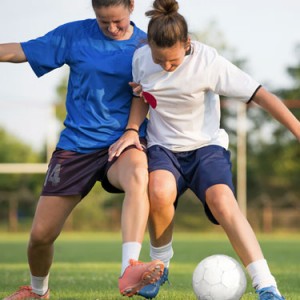Doctors’ Notes
BackActivity & Physical Fitness
Physical activity seems to be disappearing from the lives of today’s youth.
A recent national study found that 77% of children ages 9-13 were active in free play physical activity. But the number decreased to 29% for high school students. This dwindling amount of activity our children get is thought to be one of the main reasons for an increase in the rate of childhood obesity.
 According to the Centers for Disease Control and Prevention, rates of childhood obesity have more than doubled in children and tripled in adolescents over the last 30 years. Yes, you read that right! Doubled and tripled! Wow! (If that doesn’t make me want to get my son Cael out to run the Pittsburgh Marathon, I’m not sure what does!)
According to the Centers for Disease Control and Prevention, rates of childhood obesity have more than doubled in children and tripled in adolescents over the last 30 years. Yes, you read that right! Doubled and tripled! Wow! (If that doesn’t make me want to get my son Cael out to run the Pittsburgh Marathon, I’m not sure what does!)
Because of this increased rate, children are beginning to suffer illnesses that were once traditionally seen in the adult population. Overweight children are at an increased risk for cardiovascular disease, diabetes, bone/joint problems, and sleep apnea. Encouraging children to get proper amounts of exercise can greatly reduce the risk for developing childhood obesity and the lifelong health risks that accompany it.
Just as we have to teach our children how to drink from a cup, go potty, and pick out clothes that match (okay, so I’m still working on this one), we need to teach them to be physically active. We may not think about it that way, but physical activity really is a skill our children need to be taught. The routines and habits we teach children now will later become part of who they are as adults. That’s why it’s important for us as parents to make exercise a daily activity for our kids.
The proper amount of exercise not only helps children maintain a healthy weight, but also helps build their strength, enhance their motor skills, social skills, and brain development, and improve their sleep. Another outstanding benefit of physical activity is the confidence that children gain in themselves. Recent research has produced more and more evidence that physically active children have fewer behavioral problems and longer attention spans.
Now, it’s easy for me to sit here and tell you all the many benefits that physical activity gives our kids. The more challenging part is the how. How do we fit yet another thing into our already packed schedules of homework, school projects, Boy Scouts, etc., etc., etc.? Let’s first start with the How Much exercise is needed before we move on any further…
How Much?
Children should be active for more than 60 minutes a day on most days of the week. These don’t need to be consecutive days, and the 60 minutes can be broken up into several sessions if needed.
Doing What?
What you do to keep your kid moving will depend a lot on your child and his/her interests. The key is to keep it fun and enjoyable. It’s important to create a positive attitude for physical activity. Children should never be forced into playing a sport or any other physical activity. Many children, if given the ability to explore various activities and methods, will find some form of physical activity that they find enjoyable.
Here’s some good, age-based advice…
Preschoolers
Activities that help them continue to develop motor skills:
Kicking/throwing a ball
Playing tag or follow the leader
Hopping on one foot
Riding a trike or bike with training wheels (and a helmet of course)
Freeze-dancing
Running obstacle courses
Organized sports are not recommended until a little older.
School Age
Activities that make them feel successful, and that keep their attention away from sedentary activities like TV, computer, iPad, etc.:
Traditional sports (baseball, basketball, soccer)
Martial arts
Biking
Hiking
Playing outside
Teenagers
Activities usually must be planned, and often have to be “sandwiched” between other responsibilities and commitments:
Organized sports
Yoga
Skateboarding (with a helmet of course)
Exercising for teens often means not only the right activity, but also the right clothes and shoes to help the teen feel more comfortable.
Three Categories of Kids
When looking at your child and helping to organize and plan for increased physical activity, it’s important to look at your child’s age and fitness personality. Think about where your child fits into these three categories:
The Non-Athlete: lacking athletic ability, interest in physical activity or both.
The Causal Athlete: interested in being active but isn’t a star player and is at risk of getting discouraged in a competitive environment.
The Athlete: athletic ability; is committed to a sport or activity.
Understanding your child’s needs, as well as the concepts of fitness types, will most likely help you find the right activities to increase movement and physical activity. However, no matter the child’s fitness personality, all kids have the ability to be physically active. With a parent’s positive perspective, encouragement, and assistance in making physical activity a priority, children can develop a lifelong love of physical activity.
Travis Lewis, a Kids Plus provider, is a certified Athletic Trainer and a certified Physician Assistant.